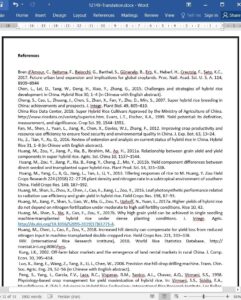Abstract
Productivity of intensive rice cropping systems plays a pivotal role in national food security in China. By 2030, a 20% increase in rice yield will be required to meet the growing demand for food that will result from population growth. The success of China’s super hybrid rice was expected to provide an opportunity to cope with the increased demand for rice. However, in China the planting area of super hybrid rice is less than 8% of the national total rice planting area and the planting area of hybrid rice has continued to decline since 1996. The decreased planting area of hybrid rice is related to the shift in rice establishment methods from manual transplanting to direct seeding and mechanical transplanting. These shifts can result in increased seeding rates and reduced morphological advantages of heterosis (e.g. reduced panicle size), both of which can influence cultivar choice by rice farmers, who will tend to favor cheaper inbred cultivars. The shifts in rice establishment methods can also eliminate or reduce the seedling nursey period and subsequently shorten the growth duration and negatively affect the yield. We anticipate that the above problems will be resolved by integrating mechanization (e.g. designing high-precision seed sowing machines) with agronomy (e.g. improving management practices for increasing seed vigor) and breeding (e.g. developing high-yielding cultivars with short growth durations). This strategy also has implications for production of other crops in intensive farming systems in China and for other developing countries with rice-based intensive cropping systems.
1. Challenges to rice production for ensuring food security in China
China has 22% of the world’s population but only 7% of the world’s arable land (Piao et al., 2010). In order to produce enough food, intensive cropping systems have been extensively developed in China. Considerable progress has been made by developing high-yielding crop cultivars and improving crop management practices. As a result, there has been remarkable growth in both crop production and national food security in China (Fan et al., 2012).











